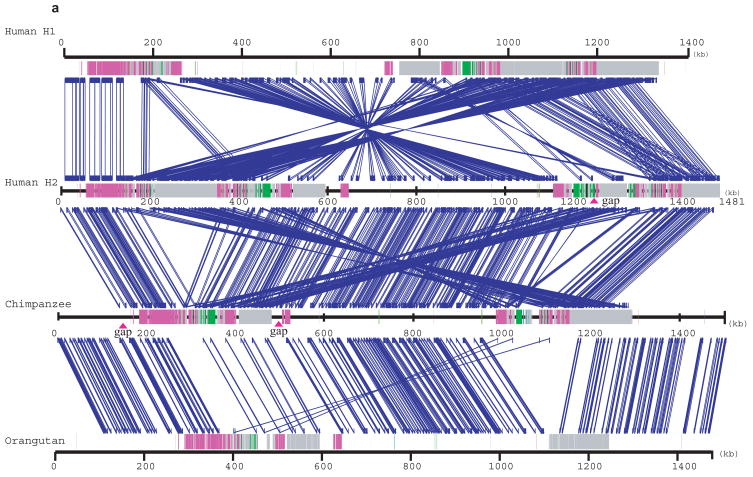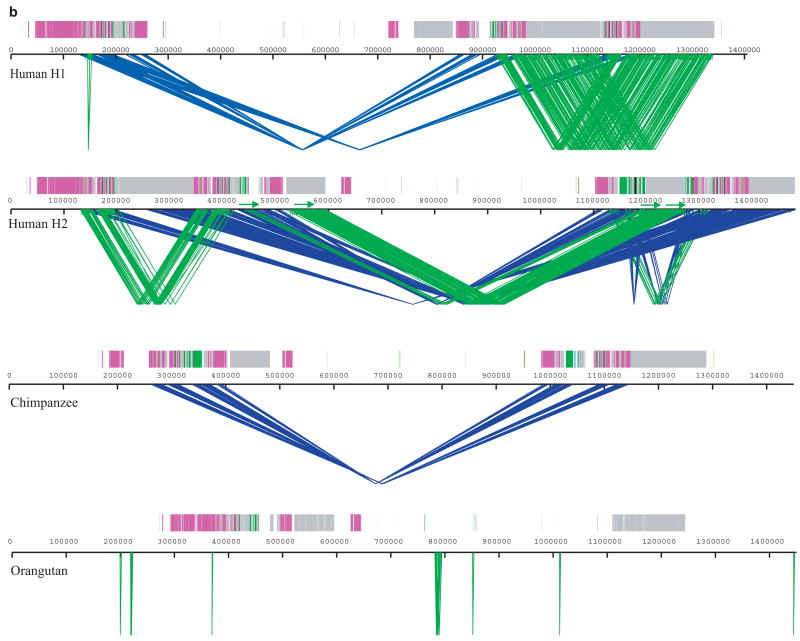Figure 3. A sequence comparison of the human H1, H2, chimpanzee and orangutan 17q21.31 region.
(a) BAC-based sequence assemblies of both the human inverted (H2) and non-inverted haplotype (H1) were compared using Miropeats 39 to a BAC-based assembly of the chimpanzee (PTR) and a WGS-based assembly of the orangutan (PPY, threshold –s 1000). Regions of homology are shown with blue joining-lines to the corresponding sequence above. Duplicon architecture based on human segmental duplications is overlaid as colored or grey bars. H1 shows a ~970 kbp inverted segment when compared to H2, chimpanzee (PTR) and the orangutan sequence assembly. The H2 sequence assembly shows a relocation of large (~200 kbp) high-identity duplications on either side of the unique interval when compared to chimpanzee (crisscross pattern). A comparison between orangutan and chimpanzee shows evidence of a (~100 kbp) segmental duplication from proximal to distal duplication block, which likely occurred in the common ancestor of chimpanzee and human (6–12 million years ago). (b) The extent of local direct (green) and inverted (blue) intrachromosomal SDs flanking the inversion are shown for human H1 and H2 haplotypes, chimpanzee (PTR) and orangutan (PPY) (Miropeats threshold –s 300). We examined the duplication content (WGAC) within each assembly and computed the number of non-redundant duplicated basepairs for each assembly (Supplementary Table 1). No homologous SDs (sequence identity ≥ 90%, size ≥ 1 kbp) were found in orangutan genome flanking the inversion region, while in chimpanzee and H1 haplotype, 292 kbp and 227 kbp were identified respectively. H2 shows the most extensive duplication architecture flanking the inversion including 95 kbp in direct orientation.


